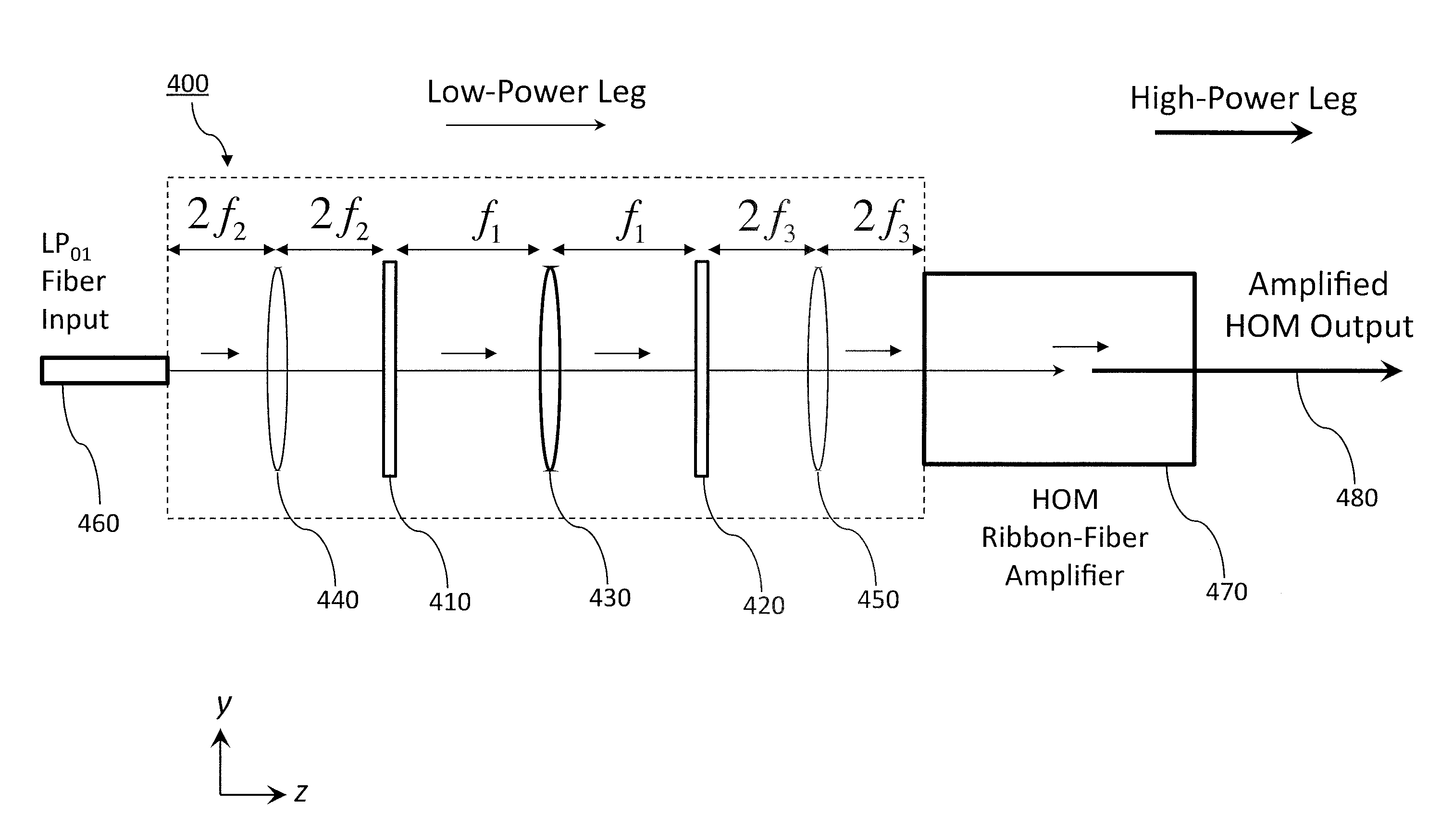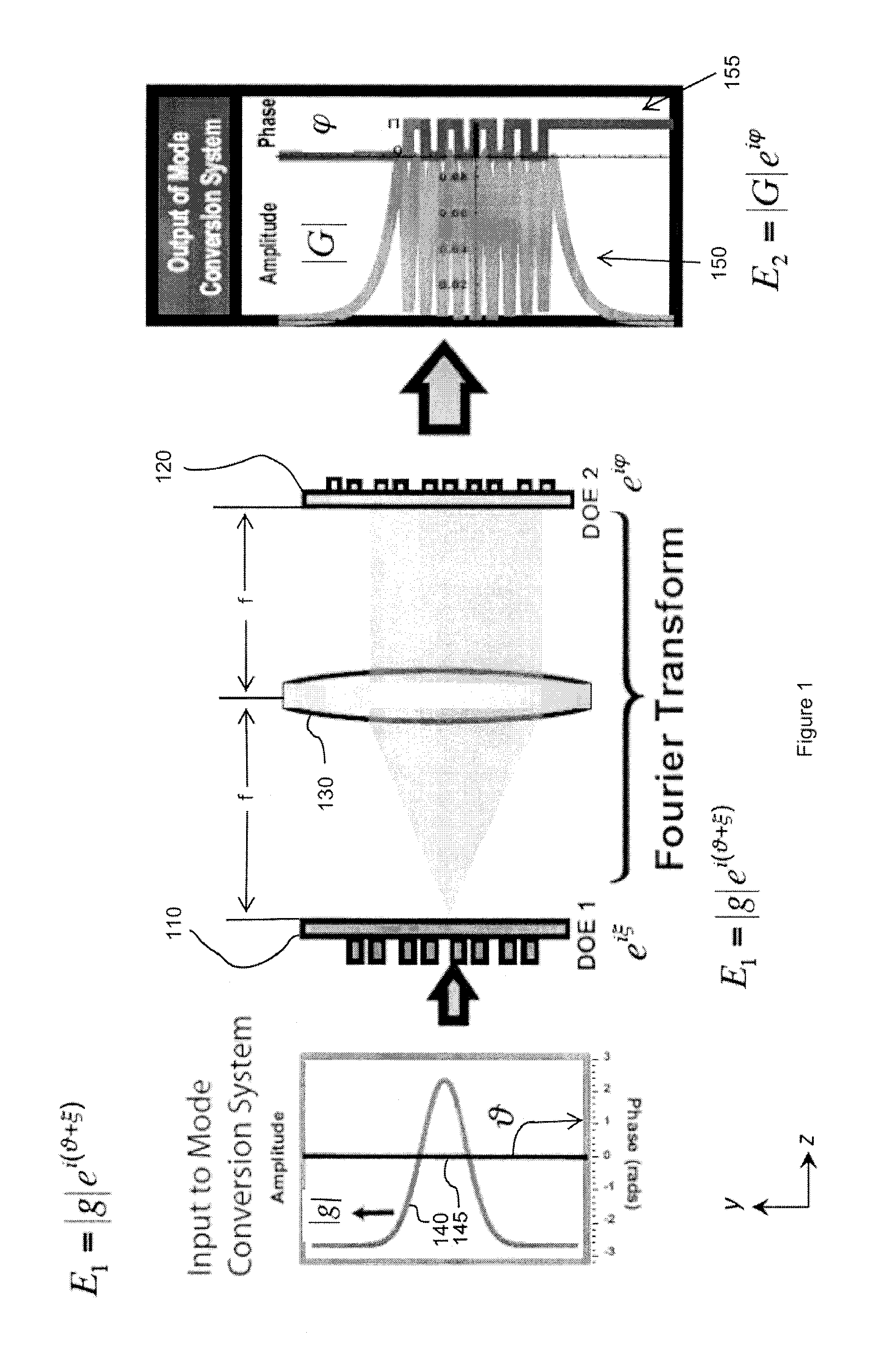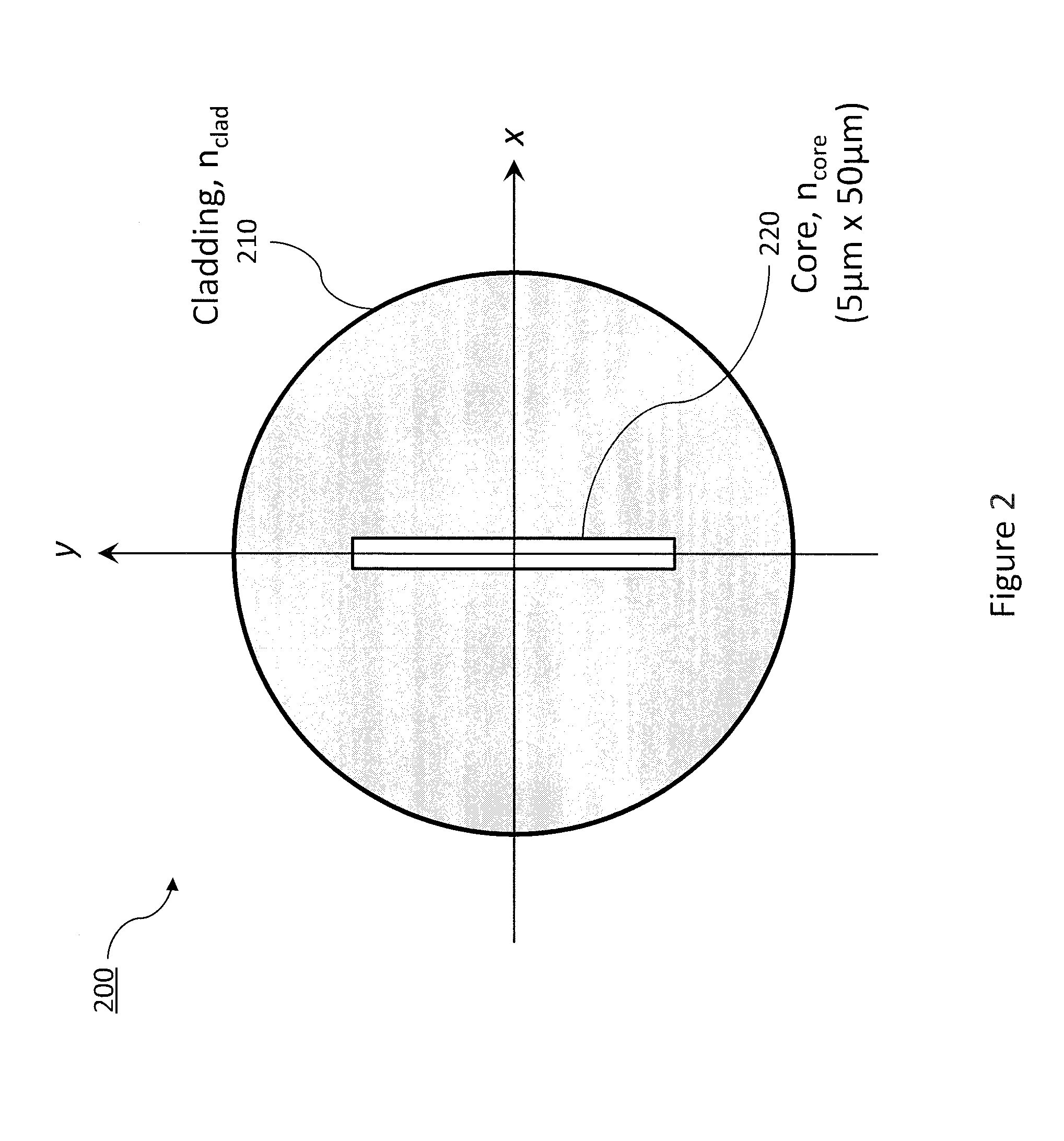Diffractive optical elements for transformation of modes in lasers
a technology of optical elements and lasers, applied in the field of diff, can solve the problems of undesirable nonlinear optical effects, optical damage, optical damage, etc., and achieve the effects of improving pump/signal spatial overlap, improving performance, and high-quality modal outpu
- Summary
- Abstract
- Description
- Claims
- Application Information
AI Technical Summary
Benefits of technology
Problems solved by technology
Method used
Image
Examples
Embodiment Construction
[0040]In this invention, we teach embodiments that can circumvent the prior-art system design tradeoffs described in the Background of the Invention. Embodiments are presented that enable one to utilize ribbon-core fiber amplifiers, enabling high-power scaling relative to that limited by circular-core fibers, which when combined with novel spatial optical mode transformers, can efficiently convert high-order ribbon-fiber modes to TEM00 fundamental modes, and vice versa.
[0041]The basic modal conversion module involves a pair of diffractive-optic-elements (DOEs), situated at conjugate Fourier planes of an optical system. This configuration enables the transformation of a given input spatial profile to a specific output beam profile. As an example, a transformation module can be implemented to convert the diffraction-limited LP01 mode from a low-power fiber laser to a specific higher-order-mode (HOM) of a ribbon core fiber amplifier, and, subsequently, from the amplified HOM ribbon-fib...
PUM
 Login to View More
Login to View More Abstract
Description
Claims
Application Information
 Login to View More
Login to View More - R&D
- Intellectual Property
- Life Sciences
- Materials
- Tech Scout
- Unparalleled Data Quality
- Higher Quality Content
- 60% Fewer Hallucinations
Browse by: Latest US Patents, China's latest patents, Technical Efficacy Thesaurus, Application Domain, Technology Topic, Popular Technical Reports.
© 2025 PatSnap. All rights reserved.Legal|Privacy policy|Modern Slavery Act Transparency Statement|Sitemap|About US| Contact US: help@patsnap.com



